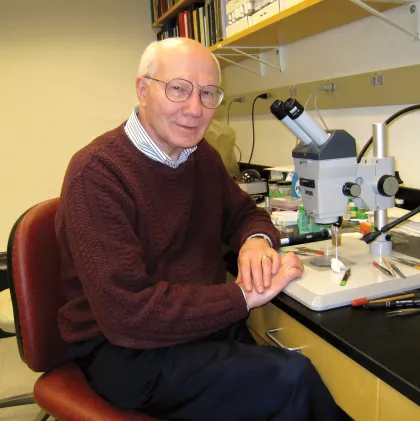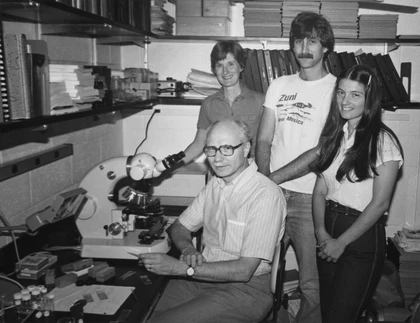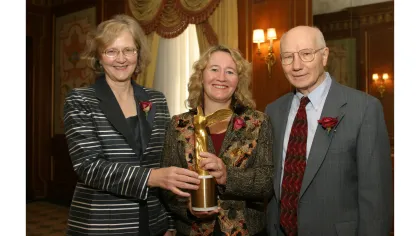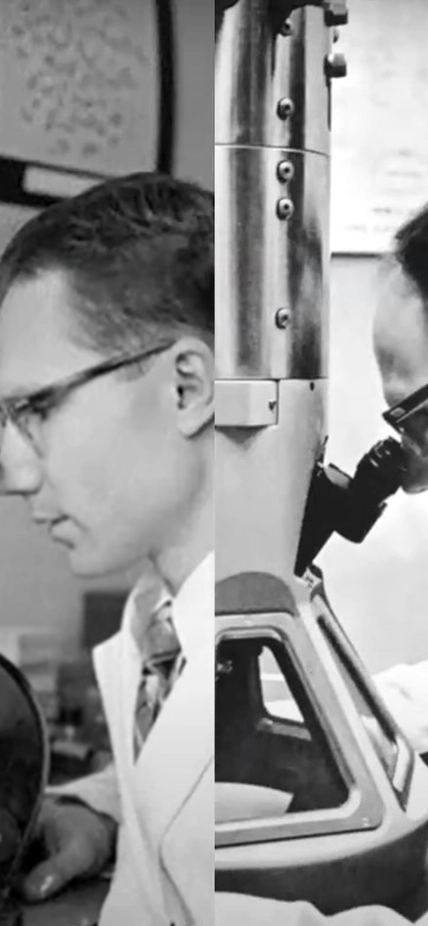
Washington, DC—Legendary Carnegie Science biologist Joseph Gall was posthumously awarded the American Association for the Advancement of Science’s Golden Goose Award this week. This annual prize honors federally funded research of “seemingly obscure” or even “silly sounding” subjects that led to major breakthroughs. It was designed to highlight unexpected impacts of curiosity-driven research.
“The Golden Goose awardees definitively demonstrate that federally funded American science continues to deliver for all of us,” said Sudip S. Parikh, chief executive officer at AAAS and executive publisher of the Science family of journals. “These discoveries show that American science is anything but stagnant. AAAS and the American people will continue to support federal investment in research that can make us healthier, safer, and stronger.”
Gall, who joined Carnegie in 1983, was recognized for his work on “nature’s oddities,” including pond scum and frog egg cells which “informed disease diagnostics" as well as his mentorship of award-winning scientists.
His lifelong fascination with the natural world—particularly with creatures that call ponds and swamps home—gave Gall what to his colleagues often seemed like a sixth sense for experiment design. He had an ability to select the perfect organism for pursuing each individual research question.
Growing up, he spent his summers on a farm in Northern Virginia where he collected insects. Over time, this passion grew from homemade butterfly nets supplied by his mother to the gift of a microscope. Gall’s passion for sampling and studying pondwater did not diminish with age. It was a hobby he shared with many in his life, from family members for mentees.

“Joe was the ideal model of a scientist—someone whose natural curiosity blossomed into a brilliant professional career,” said Carnegie Science President John Mulchaey. “His knowledge gathering process was lifelong and the wealth of his intelligence and depth of his skills enabled him to forever change how biology research is done.”
Early in his career, Gall revolutionized our understanding of how chromosomes are organized by showing that most chromosomes contain a single DNA molecule stretching from end to end.
Working with frog egg cells, Gall and Mary Lou Pardue developed a powerful technique called in situ hybridization, which allows researchers to locate and map genes on this chromosomal DNA. It was among the first techniques to connect individual nucleic acid sequences with the genome as a whole and helped usher in the modern genomic research era.
Later, his work with Elizabeth Blackburn revealed the structure of telomeres, a repetitive segment of DNA at the end of each chromosome, which protects the genetic material from damage and ensures it is fully copied prior to cell division. This revolutionary discovery was made working with Gall’s suggested research organism, a single-celled “pond scum” called Tetrahymena.

In addition to his major contributions to our understanding of chromosomes and the cellular nucleus, AAAS honored Gall for his legacy of championing women in science in an era where that was unusual.
“For many decades, Joe’s lab was known as one of the few places where women would be taken seriously and not sidelined, receiving professional training that would launch them into biology research careers,” said Biosphere Sciences and Engineering Interim Director Yixian Zheng, a longtime colleague of Gall’s.
